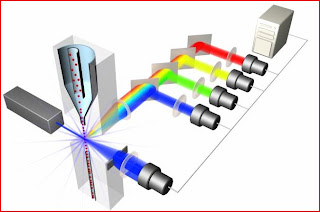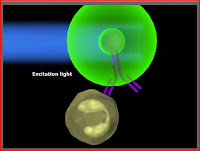I lived in the second largest city in America. I worked in one of the best neurosurgical departments at one of the best hospitals in the country. I saw multiple brain surgeries. I shadowed some of the
 most brilliant physicians in the world. I attended lectures, brain tumor boards, neurovascular meetings, and lab meetings all of which were focused on providing the best care possible to the patients of the Maxine Dunitz Neurosurgical Institute. I studied immunology. I gained practical research experience while working very hard in the lab. I participated in an experiment that lasted over 24 straight hours and then directly afterwards went into the OR to shadow a surgery. I saw many, many movies in the movie capital of the world. I dined, danced, and enjoyed life in LA. I visited New York and met one of my favorite movie stars. I witnessed the tremendous amount of dedication and time that is required to be a successful neurosurgeon, and I gained even more excitement and enthusiasm at the prospect of becoming one. In short, I had an absolutely amazing experience!
most brilliant physicians in the world. I attended lectures, brain tumor boards, neurovascular meetings, and lab meetings all of which were focused on providing the best care possible to the patients of the Maxine Dunitz Neurosurgical Institute. I studied immunology. I gained practical research experience while working very hard in the lab. I participated in an experiment that lasted over 24 straight hours and then directly afterwards went into the OR to shadow a surgery. I saw many, many movies in the movie capital of the world. I dined, danced, and enjoyed life in LA. I visited New York and met one of my favorite movie stars. I witnessed the tremendous amount of dedication and time that is required to be a successful neurosurgeon, and I gained even more excitement and enthusiasm at the prospect of becoming one. In short, I had an absolutely amazing experience!I feel very blessed to have participated in this program. I come away from the past three months more excited than ever to become a physician. My time at Cedars-Sinai has significantly increased my desire to become a neurosurgeon. I am more deter
 mined than ever to study hard so that I can become the best physician that I can possibly be, and I absolutely cannot wait for the day when I too can work to improve the lives of patients. I only hope that one day I will be like the neurosurgeons of Cedars-Sinai: totally committed to the well-being of their patients, doing everything possible to give their patients hope and the chance at a brighter tomorrow, and tirelessly working to cure brain cancer. I know that this summer would not have been possible without God, the members of the selection committee, my professors at Wofford, and my being a Terrier. So I would like to take this opportunity to sincerely thank every single person who had a hand in providing me with this opportunity. I will truly never forget my summer at Cedars-Sinai, and I know that it will have an immeasurable impact on my future career and life.
mined than ever to study hard so that I can become the best physician that I can possibly be, and I absolutely cannot wait for the day when I too can work to improve the lives of patients. I only hope that one day I will be like the neurosurgeons of Cedars-Sinai: totally committed to the well-being of their patients, doing everything possible to give their patients hope and the chance at a brighter tomorrow, and tirelessly working to cure brain cancer. I know that this summer would not have been possible without God, the members of the selection committee, my professors at Wofford, and my being a Terrier. So I would like to take this opportunity to sincerely thank every single person who had a hand in providing me with this opportunity. I will truly never forget my summer at Cedars-Sinai, and I know that it will have an immeasurable impact on my future career and life.So how do I end this blog? Perhaps with a challenge:
Dream big.
Develop your passions.
Pour your heart into what interests you.
Spend your time on things that matter.
Go after opportunities, no matter how unattainable they may seem.
Have faith.
If you do these things, then you just might stumble upon something that defines who you are, you just might find something that you love, you just might attain your dreams.
Thanks so much for reading my blog!
-Joseph H. McAbee






































